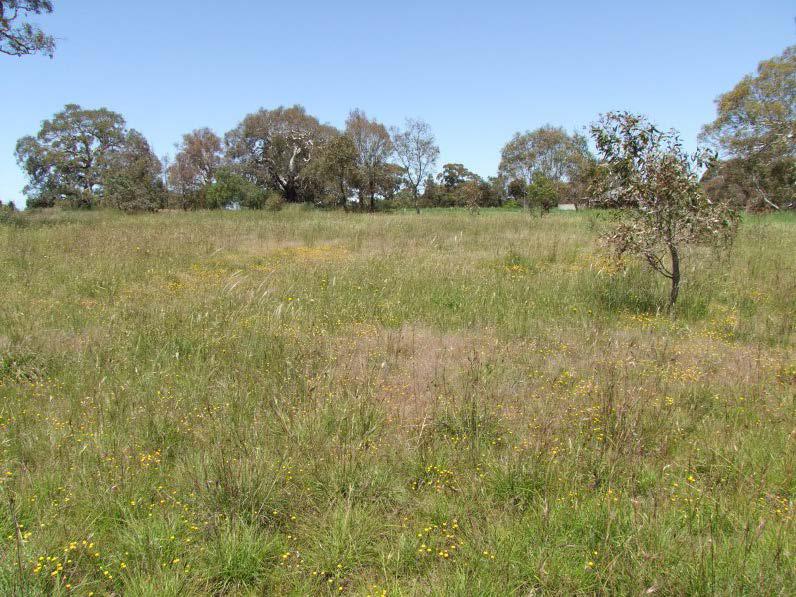
While some trees were cleared from the Arboretum site in the past, several large River Red-gums remain and much of the native understorey is still present. A watercourse runs diagonally through the Arboretum from north-east to the south-west. The natural stream has been extensively modified and dammed as a series of ponds that form a major wetland. The main plantations of trees are to the west and north of the wetland. Apart from the western boundary, the ground layer between the mounds still retains a good cover of native plant species. Further east and north of the old saw mill is an area of Plains Grassy Woodland with some mature and juvenile River Red-gums over an understorey dominated by native grasses and forbs. Part of the woodland has been marked out with timber bollards.
Old Ararat Road, Dunkeld, a town on the Glenelg Highway 270 km from Melbourne. The native grassland and grassy woodland is in the eastern section of the arboretum, east of the old saw mill.
Walking tracks and interpretive signage
The arboretum was established in 1992 by enthusiastic volunteers on what was an old water reserve, a town common used for grazing and an old sawmill site.
The site contains two nationally threatened species; Glycine latrobeana (Clover Glycine) which is listed as vulnerable and Golden Sun Moth which is critically endagered in Australia.
Ancient Red Gums and abundant birdlife
Prescribed ecological burning, spot spraying of environmental weeds,
Keep to tracks if the ground is wet, Dogs must be kept on a leash.
Acacia melanoxylon, Acaena echinata, Acaena novae-zelandiae, Arthropodium strictum, Asperula sp., Austrodanthonia carphoides, Rytidosperma sp., Austrostipa sp., Bothriochloa macra, Burchardia umbellata, Caesia calliantha, Calocephalus citreus, Calotis sp., Carex tereticaulis, Centipeda cunninghamii, Convolvulus sp., Cynoglossum suaveolens, Dichelachne sp., Dichondra repens, Diuris sp., Drosera peltata, Elymus scaber, Eryngium ovinum, Eucalyptus camaldulensis, Euchiton involucratus, Glycine latrobeana, Goodenia pinnatifida, Hypericum gramineum, Hypoxis sp., Isotoma fluviatilis, Kennedia prostrata, Leptorhynchos squamatus, Lobelia pratioides, Lomandra filiformis, Microlaena stipoides, Microtis unifolia, Oxalis sp., Pimelea humilis, Pimelea curviflora, Rumex sp., Solenogyne dominii, Thelymitra sp., Themeda triandra, Tricoryne elatior, Triptilodiscus pygmaeus, Wahlenbergia sp., Wurmbea dioica.